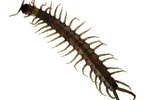
If you ever notice a pet turtle appearing to shake or flutter his "arms," or front claws, in the presence of an individual of the opposite sex, you're not simply seeing things. The behavior is a pretty common one in the turtle world, and generally signifies the urge to mate, although not always. Painted turtles (Chrysemys picta) and common sliders (Trachemys scripta) alike regularly shake their claws.
Arm Shaking and Wooing
When some male turtles attempt to woo females for mating, they approach them underwater prior to lightly shaking their claws around them. They do this shaking right by their potential mates' faces. When female turtles such as common sliders witness this and are open to the advances, they usually respond by dropping to the floors of their aquatic environments. Once they do this, they're on the verge of mating and fertilization. When female turtles don't appreciate all of the wooing and the arm fluttering, however, they often respond fiercely. Mating acts in turtles often require between 10 and 15 minutes. If you take wooing into consideration, however, the whole thing can take much longer. Wooing in turtles sometimes requires a maximum of 45 minutes.
With Fellow Males
Male turtles occasionally flutter their front claws in front of fellow males. While this might give off the impression of wooing behavior, it isn't so. Males shake their front claws in front of other males as an expression of higher social status. When they do this, it's often a precursor to physical aggression. Battles between turtles may result in painful bites courtesy of their beaks, as they are not equipped with teeth.
Youthful Turtles
Front claw fluttering behavior isn't exclusive to seasoned adult turtles. It isn't unheard of for youthful specimens to occasionally shake their arms around, too, also as wooing behaviors. If a turtle flutters his claws prior to achieving maturity, however, he still cannot mate or breed successfully. Until turtles are mature, claw fluttering is merely a spectacle.
Claw Caresses
While some types of male turtles flutter their front claws as a means of drawing in females, others have a slightly different technique. Some of them actually employ their claws to softly caress the females' faces, rather than to just shake them by their heads. This caressing action is heightened by the males' claws, which are often notably lengthy. Female turtles frequently have significantly shorter claws than the boys.
References
- World Association of Zoos and Aquariums: Common Slider
- Wingham Wildlife Park: Cumberland Slider Turtle
- Freshwater Ecology & Conservation Lab: Red-eared Slider Turtles
- My First Pocket Guide About Michigan; Carole Marsh
- NatureMapping: Red-eared Slider
- Alberta Turtle & Tortoise Society: Red-Eared Slider Information
- Turtles; Charles Fergus
Photo Credits
-
Hemera Technologies/PhotoObjects.net/Getty Images




